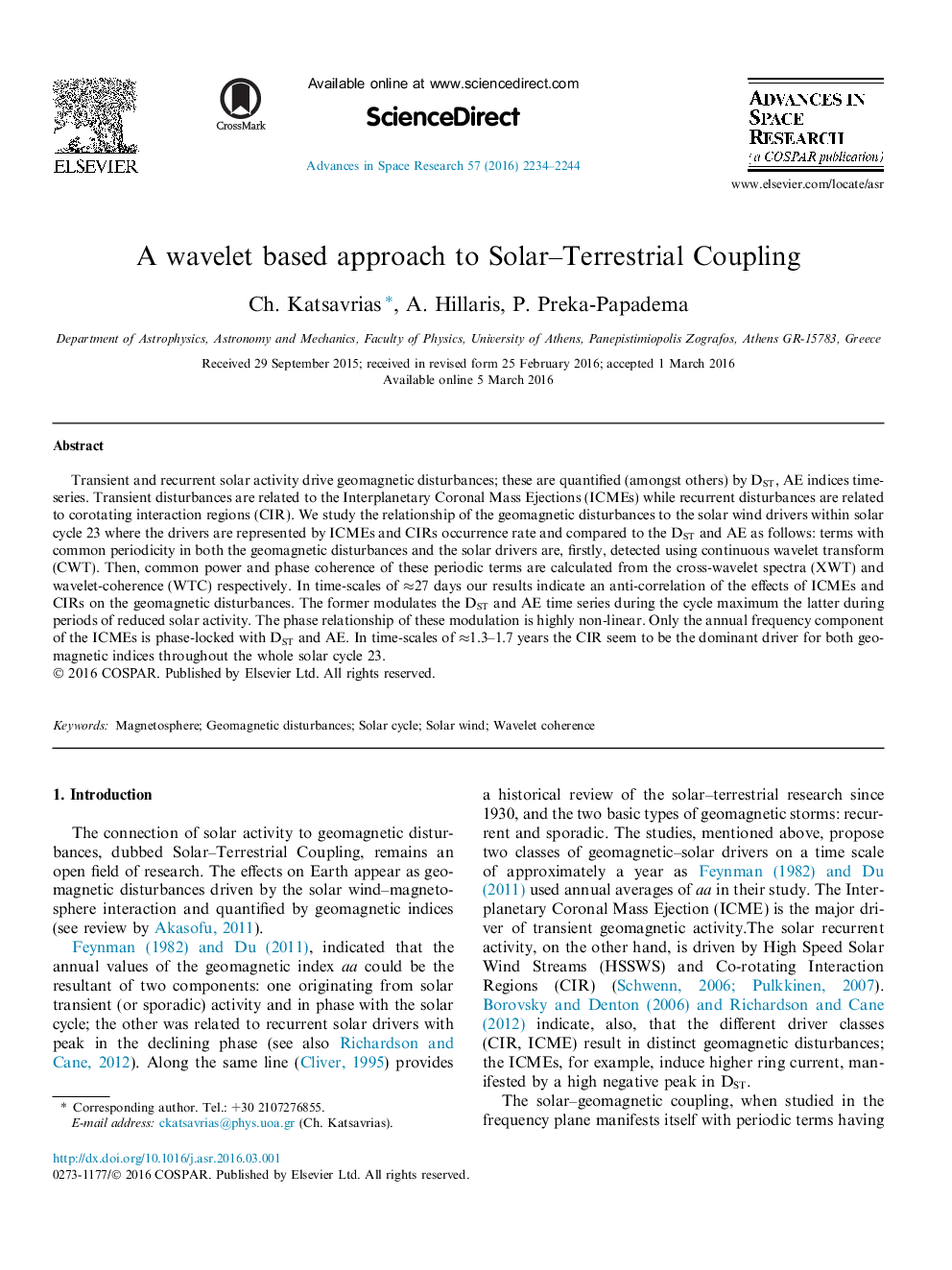| Article ID | Journal | Published Year | Pages | File Type |
|---|---|---|---|---|
| 1763437 | Advances in Space Research | 2016 | 11 Pages |
Abstract
Transient and recurrent solar activity drive geomagnetic disturbances; these are quantified (amongst others) by DST, AE indices time-series. Transient disturbances are related to the Interplanetary Coronal Mass Ejections (ICMEs) while recurrent disturbances are related to corotating interaction regions (CIR). We study the relationship of the geomagnetic disturbances to the solar wind drivers within solar cycle 23 where the drivers are represented by ICMEs and CIRs occurrence rate and compared to the DST and AE as follows: terms with common periodicity in both the geomagnetic disturbances and the solar drivers are, firstly, detected using continuous wavelet transform (CWT). Then, common power and phase coherence of these periodic terms are calculated from the cross-wavelet spectra (XWT) and wavelet-coherence (WTC) respectively. In time-scales of â27 days our results indicate an anti-correlation of the effects of ICMEs and CIRs on the geomagnetic disturbances. The former modulates the DST and AE time series during the cycle maximum the latter during periods of reduced solar activity. The phase relationship of these modulation is highly non-linear. Only the annual frequency component of the ICMEs is phase-locked with DST and AE. In time-scales of â1.3-1.7Â years the CIR seem to be the dominant driver for both geomagnetic indices throughout the whole solar cycle 23.
Related Topics
Physical Sciences and Engineering
Earth and Planetary Sciences
Space and Planetary Science
Authors
Ch. Katsavrias, A. Hillaris, P. Preka-Papadema,
